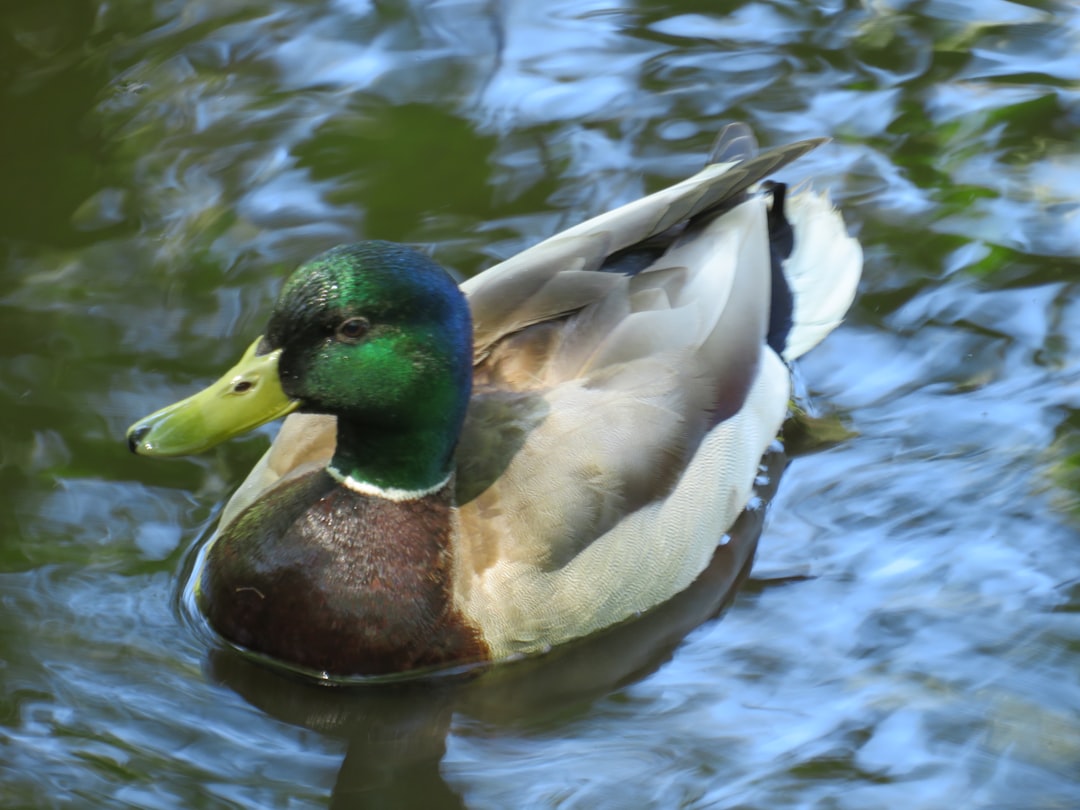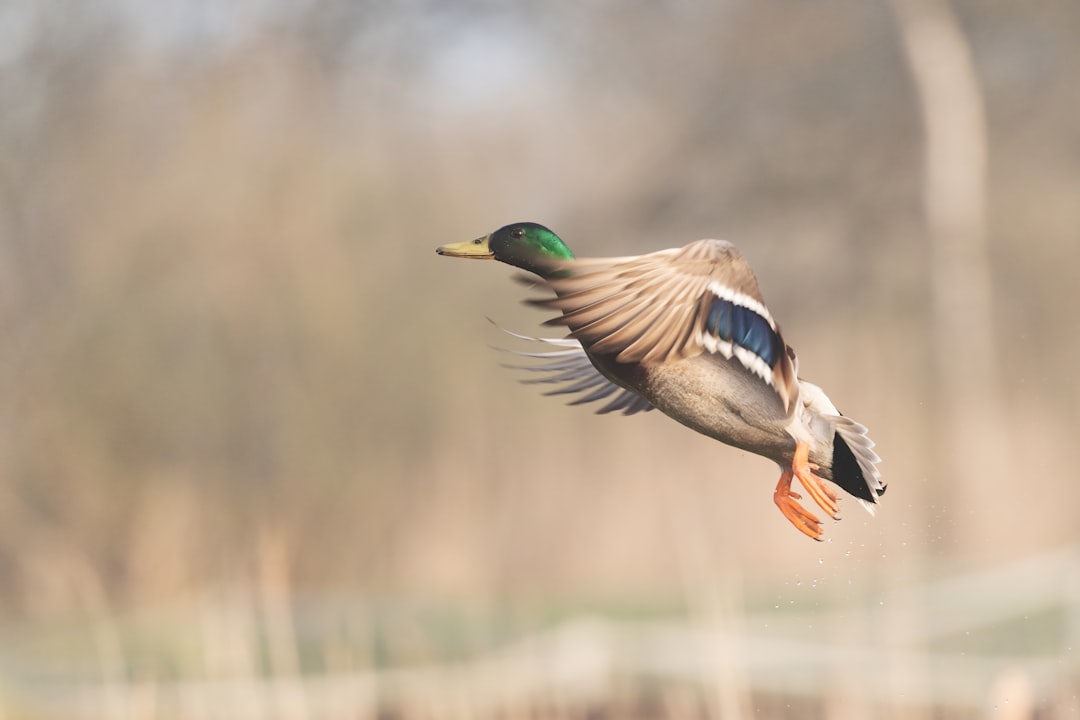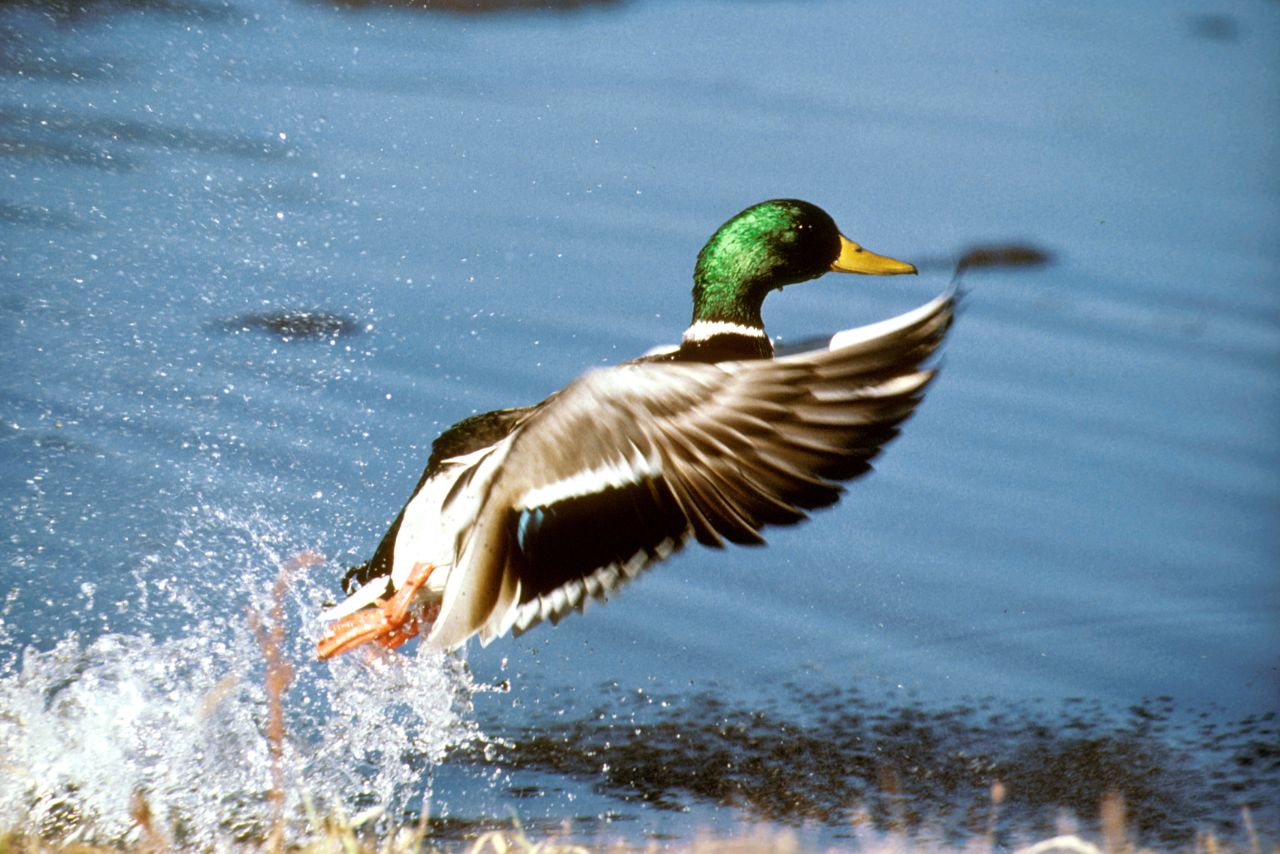Mallard ducks are a common sight in parks, ponds, and lakes. They are known for their beautiful green head, brown body, and white neck ring.
Many people wonder if these birds can fly, especially since they are often seen waddling around on land.
In this article, we will explore the question of whether mallard ducks can fly, along with some interesting facts about these fascinating birds.
So, Can Mallard Ducks Fly? Yes, mallard ducks can fly. In fact, they are highly skilled and efficient fliers, capable of reaching speeds of up to 55 miles per hour.
Mallards are migratory birds and fly long distances to reach their breeding and wintering grounds. They have strong wings and can take off from both land and water.
Overall, mallard ducks are versatile and adaptive birds that can fly, swim, and walk with ease.
The Anatomy Of Mallard Ducks
Mallard ducks have a unique anatomy that allows them to fly with ease. They have a streamlined body shape and powerful breast muscles that help them generate lift and thrust during flight.
Their wings are also specially adapted for flight, with strong bones, flexible joints, and feathers that can be adjusted for maximum lift and control.
Interestingly, male mallard ducks have larger wings than females, which may give them an advantage during courtship displays and territorial fights.
Additionally, mallards have excellent eyesight that helps them navigate through the air and avoid obstacles.
They Have A Streamlined Body
Mallard ducks have a streamlined body that helps them reduce air resistance and conserve energy during flight.
They also have a layer of fat under their skin that provides insulation and buoyancy, making it easier for them to take off from water.
A Pair Of Strong Wings
Mallard ducks have a pair of strong wings that allow them to take off and land from both land and water.

They use their wings to fly in V-shaped formations during migration, which helps them conserve energy and navigate better.
Mallards are also capable of hovering mid-air, a skill that they use when they are trying to attract mates or evade predators.
Lightweight Bone Structure
The bone structure of mallard ducks is also lightweight, which makes it easier for them to fly.
Their bones have air pockets that reduce their weight and allow them to stay in the air for longer periods without getting tired.
In addition, mallards have a unique respiratory system that enables them to extract more oxygen from the air during flight.
The Flight Patterns Of Mallard Ducks
Mallard ducks fly in a variety of patterns depending on their purpose. During migration, they fly in V-shaped formations that help them conserve energy by taking advantage of the air currents.
When searching for food, they may fly in circles or zigzag patterns over water to locate prey.
During courtship displays, male mallards perform aerial acrobatics such as spirals and dives to impress their potential mates.
What Is A Flying Mallard Duck?
A flying mallard duck is a common species of duck found all over the world. It is easily recognized by its green head, white collar, and chestnut breast.
The mallard is a dabbling duck and can be found in a variety of habitats such as ponds, rivers, and wetlands. It is known for its distinctive quacking sound, which is often heard in the early morning or late afternoon.
The mallard is an important game bird and is hunted for sport in many countries. In addition, it is also raised for its meat and eggs.
Flying mallard ducks are capable of flying long distances, with some individuals known to travel up to 2,000 miles during migration.
Can Mallard Ducks Fly?
Yes, Flying mallard ducks are highly adaptable birds that can fly, swim, and walk with ease.

They have a unique anatomy that allows them to be skilled and efficient fliers, capable of reaching impressive speeds of up to 55 miles per hour.
Their streamlined body shape, powerful breast muscles, large wings, and lightweight bone structure all contribute to their ability to fly with ease.
Do Mallard Ducks Fly In A Formation?
Yes, mallard ducks do fly in a formation. During migration season, they often fly in a V-shaped formation which helps them conserve energy by reducing wind resistance.
The lead bird creates an air current that helps the birds behind it stay aloft with less effort. As the lead bird tires, it moves to the back of the formation and another duck takes its place.
How Do Mallard Ducks Fly?
Mallard ducks fly by flapping their wings, which are large and powerful. They use their breast muscles to power the upstroke and downstroke of each wing, propelling themselves through the air.
Mallards are capable of flying at impressive speeds of up to 55 miles per hour, making them one of the fastest flying ducks.
When Do Mallard Ducks Fly?
Mallard ducks are diurnal, meaning they are active during the day. They typically fly during the early morning and late afternoon hours when they are searching for food or moving to different areas.
During migration season, mallards may also fly at night to avoid predators or take advantage of cooler temperatures.
Can Female Mallard Ducks Fly?
Yes, female mallard ducks can fly just as well as male mallards. In fact, there are no significant differences in the flying ability between the two genders.
Both males and females have the same anatomy and physical attributes that enable them to be skilled fliers.
Can Mallard Duckling Fly?
Mallard ducklings are not able to fly immediately after hatching. They need to develop their wing muscles and feathers before they are able to take flight.
Mallard ducklings typically fledge at around 50-60 days old, when they have grown their first set of adult feathers and are ready to leave the nest with their mother.
Why Do Mallard Ducks Fly?

Mallard ducks fly for a variety of reasons, including searching for food, escaping predators, and migrating to different areas. Flying allows them to cover large distances quickly and efficiently, making it an essential part of their survival strategy.
In addition to practical reasons, mallard ducks may also fly for social reasons. During breeding season, male mallards may perform aerial displays to attract females.
How High Can Mallard Ducks Fly?
Mallard ducks are not known for flying at high altitudes. They typically fly at low to mid-level heights, usually no higher than a few hundred feet above the ground.
This is because they are primarily waterfowl and prefer to fly over bodies of water where they can rest or find food if needed.
How Much Energy Does A Duck Use Up When Flying?
The amount of energy a duck uses when flying varies depending on factors such as the bird’s size, age, and flight speed.
Mallard ducks are efficient fliers and have been observed to travel long distances without getting tired. They conserve energy by flying in a V-formation and taking turns leading the group.
On average, mallard ducks use around 1.7 times more energy when flying than they do when resting.
How Fast Can Mallard Ducks Fly?
Mallard ducks are not the fastest fliers, but they can still reach impressive speeds when necessary.
They typically fly at a cruising speed of around 40-55 miles per hour (64-88 kilometers per hour), but can reach top speeds of up to 65 miles per hour (105 kilometers per hour) during bursts of flight.
How Far Do Mallard Ducks Migrate?
The distance that mallard ducks migrate varies depending on their location and the time of year.
Mallards in North America may travel anywhere from a few hundred miles to several thousand miles during migration season.
In Europe and Asia, mallards may migrate even further, with some birds traveling over 10,000 kilometers (6,200 miles) between their breeding and winter grounds.
Do Mallard Ducks Fly At Night?
Mallard ducks are diurnal, which means they are most active during the day and rest at night. While they are capable of flying at night, they generally do not do so unless necessary.
This is because their eyesight is not well adapted to low-light conditions, making it difficult for them to navigate and avoid obstacles.
Factors That Affect The Flight Of Mallard Ducks
Factors That Affect The Flight Of Mallard Ducks:
- Altitude: Mallard ducks can fly at different altitudes depending on their purpose. For example, during migration, they fly at higher altitudes to conserve energy.
- Weather conditions: Mallard ducks are affected by weather conditions such as wind speed and direction. They can adjust their flight patterns to compensate for these conditions.
- Body weight: The weight of a mallard duck can affect its ability to fly. Ducks that are too heavy may struggle to take off or maintain flight.
- Wing shape and size: The shape and size of a mallard duck’s wings can affect its flight. Ducks with larger wings can generate more lift and fly for longer distances.
- Flight speed: Mallard ducks can adjust their flight speed depending on the distance they need to cover. They can fly at different speeds to conserve energy or cover more ground quickly.
Can Mallard Ducks Take Off Without Water?
Mallard ducks are capable of taking off and landing without water, but they prefer to have a body of water nearby in case they need to escape from predators or rest during flight.
They require a running start to take off, flapping their wings vigorously until they achieve lift-off.
Once in the air, mallards use their powerful wing muscles to sustain flight for long periods of time.
Bottom Line: Can Mallard Ducks Fly?
Mallard ducks are capable fliers that can travel long distances without getting tired. They use their efficient flying abilities to maneuver through obstacles and avoid predators, making them well-adapted to life in the wild.
Mallards typically fly at a cruising speed of around 40-55 miles per hour (64-88 kilometers per hour) but can reach top speeds of up to 65 miles per hour (105 kilometers per hour) during bursts of flight.
Migration helps mallard ducks find suitable food and habitat throughout the year, with some birds traveling over 10,000 kilometers (6,200 miles) between their breeding and wintering grounds.
FAQs
How Fast Can Mallard Ducks Fly?
Mallard ducks can fly at a cruising speed of around 40-55 miles per hour, but can reach top speeds of up to 65 miles per hour during bursts of flight.
How Far Can Mallard Ducks Migrate?
Mallard ducks can migrate anywhere from a few hundred miles to over 10,000 kilometers depending on their location and the time of year.
Can Mallard Ducks Take Off without Water?
Yes, mallard ducks are capable of taking off and landing without water, but they prefer to have a body of water nearby for safety.




